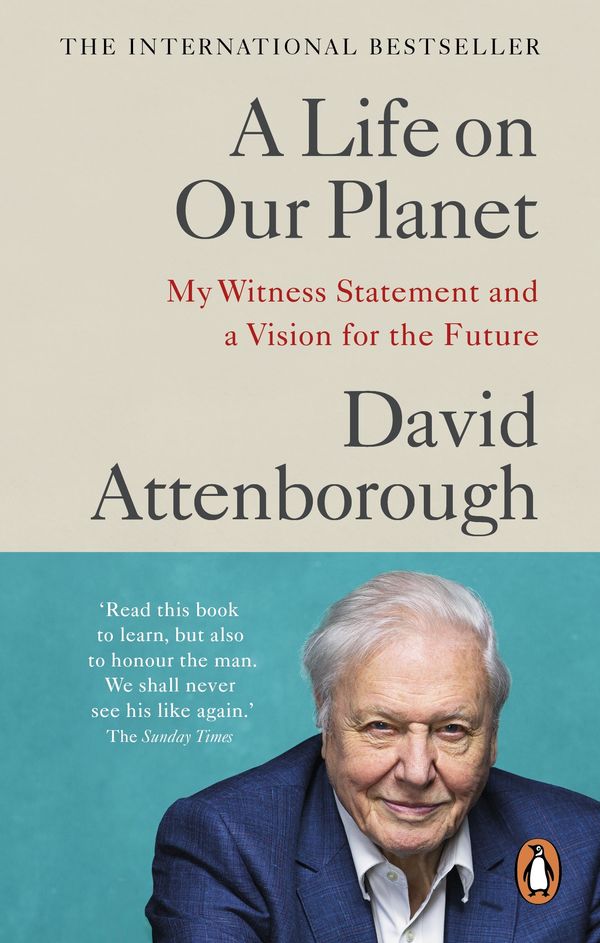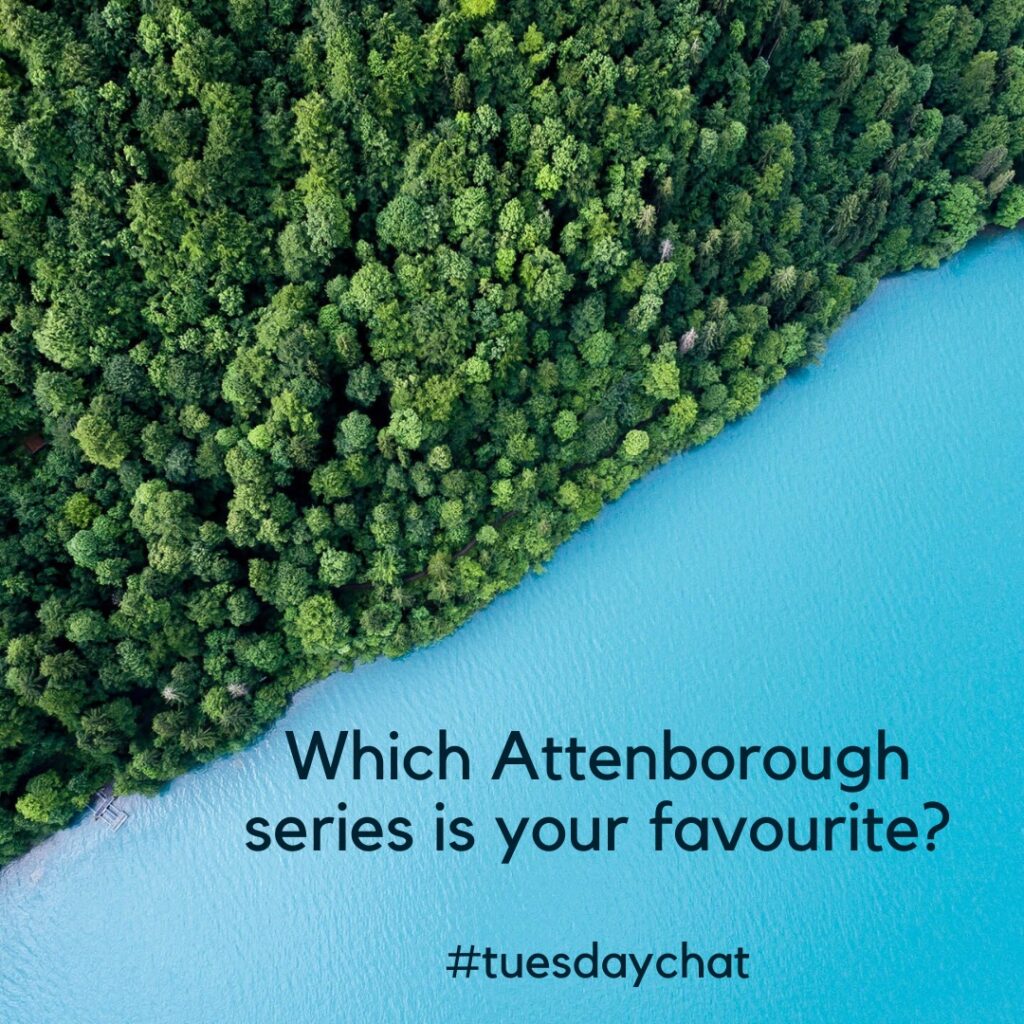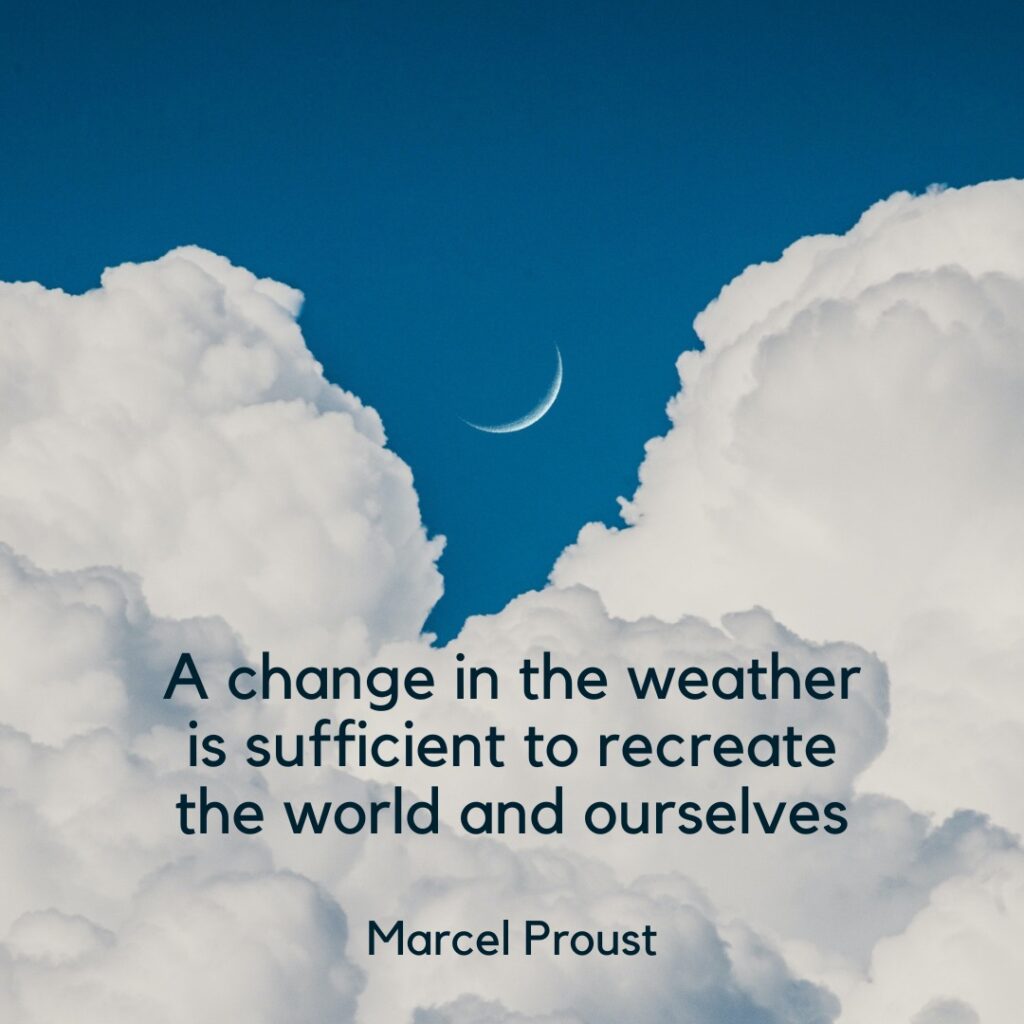Nature’s beauty can be fleeting but not through Louie Schwartzberg’s lens. His stunning time-lapse photography, accompanied by powerful words from a Benedictine monk, serves as a meditation on being grateful for every day in this Ted Talk.
Category Archives: Climate
Spotlight on Sir David Attenborough
Sir David Attenborough – with his distinctive voice and his enthusiasm for the wonders of our natural world – is probably the best-known environmentalist in the world. As writer, presenter and narrator, he has been educating and entertaining audiences about natural history for almost 70 years. He has created a tremendous body of work that represents a comprehensive survey of animal and plant life on Earth, as well as showing generation after generation of viewers the marvellous diversity in our environment and our living things. Now 96 years old, Sir David is still an active advocate for environment protection, highlighting how issues such as climate change and population growth can impact biodiversity. If you want to learn more about Sir David’s life and career, here are some good starting points:
Wild Life: The Extraordinary Adventures of Sir David Attenborough by Leisa Stewart-Sharpe
Journey through the jungle and coral reefs, across the African plains and icy poles, and even to the Galapagos Islands, in this beautiful picture book about the life and work of Sir David Attenborough. We discover that David has been a nature-lover since a young age, collecting fossils, stones and natural specimens to create his own “museum”. His eighth birthday gift – a fire salamander – sparks his imagination and ultimately leads to David Attenborough travelling and filming across the continents, visiting astonishing places and mysterious animals, and showing them to audiences all over the world.
Living Planet: The Web of Life on Earth by David Attenborough
This is a new and updated edition of The Living Planet, originally published in 1984, which looks at how plants and animals have evolved and adapted to the differing geographies and climates found around the world. The chapters march majestically across the planetary surface, showing how adaptation has created enormous diversity: from the poles to the tundra, to forests and jungles, the grasslands, the deserts. From fresh water to salt water, deep oceans to mountains and volcanoes. With the help of zoologist Matthew Cobb, this updated edition describes our latest understanding about biodiversity and evolutionary biology, including a significantly revised chapter on human evolution. The Living Planet is packed with information and stunning photography, and like all of Sir David’s work, manages to both inform, entertain as well as inspire.
A Life on Our Planet: My Witness Statement and Vision for the Future by David Attenborough
In recent years, Sir David has shifted his attention from showing us the wonders of the natural world, to highlighting the environmental threats that stands to destroy our biodiversity. A Life on Our Planet is Sir David’s “witness statement” for the “the dreadful damage” done by humanity, and his plea for urgent climate action. Using his lifetime as a framing device, Sir David captures the accelerating destruction of our planet – changes not obvious from day to day, but shown in stark clarity over nine decades. He then warns us of the painful consequences of inaction – ice-free summers in the Arctic by the 2030s, climate-induced difficulties in food production and large scale, unmanageable human migration by late this century. Nonetheless, his call for action ends on a hopeful note, with ideas on how to turn things around by reducing energy and resource consumption and adopting a more sustainable diet.
Adventures of a Young Naturalist: Sir David Attenborough’s Zoo Quest Expeditions by David Attenborough
One of the first television programs presented by Sir David was Zoo Quest, which followed him and his (very small) team on expedition to British Guiana (Guyana), Indonesia and Paraguay in the 1950s. These expeditions aimed to collect exotic live animals – that no other zoo possessed – and bring them back for display at the London Zoo. Adventures of a Young Naturalist takes an affectionate, funny look at these intrepid trips, where Sir David and his team encounter idiosyncratic characters, exotic animals including capybaras, komodo dragons and vampire bats, and pristine environments. We also see early glimpses of the passion, respect and confidence around animals that will become Sir David’s onscreen trademark. Adventures of a Young Naturalist also encourages us to reflect on how, through the work of Sir David and other conservationists, our attitudes towards wildlife conservation have changed.
Journeys to the Other Side of the World: Further Adventures Of A Young Naturalist by David Attenborough
This companion volume to Adventures of a Young Naturalist is a collection of stories from the later part of the Zoo Quest program, where the young David Attenborough and his team travelled to Madagascar, New Guinea and other Pacific Islands, and to Australia’s Northern Territory. These expeditions became lessons in anthropology as well as zoology, with the team learning about and recording the indigenous culture of these remote places, whose ways of life had never been encountered by most of the British public before. From Aboriginal rock art, to the land divers of Pentecost Island, to encounters with paradise birds and chameleons, these stories are a valuable record of rituals and wildlife never previously filmed, and that have become endangered.
Life on Air (Revised and Updated Edition) by David Attenborough
It makes perfect (and witty) sense that Sir David, who made his name with the Life on Earth series, would call his memoirs Life on Air. This latest version is updated to include the most recent activities in his 60+ year career. The story starts in 1950, when a young David, dissatisfied with his job in a publishing house, applied for a job at the BBC. He was not successful; however, he was eventually asked to join BBC’s television department, kickstarting his long association with wildlife programming. Sir David spent considerable time as station management before his love of natural history led him to return to programme-making (just imagine – if he had become the Head of the BBC, his monumental Life on Earth series might never have been made!). Like his TV persona, Sir David writes with unfailing modesty and a warm sense of humour, none of which obscure the groundbreaking work he has done, both as a broadcaster and as station management.
Sir David Attenborough: People’s Advocate for #COP26 Address To World Leaders
In an electrifying speech delivered at the opening of the World Leaders Summit on Climate Change in Glasgow, Sir David Attenborough gave a message of hope on behalf of the world.
Click through to watch.
#tuesdaychat
Climate Change: Understanding our Changing Weather
It is hard to ignore the increasing numbers of unusual or unseasonal severe weather events – think floods, wildfires, droughts, snowstorms – appearing all around the world. Our “climate normal” seems to be changing – but to what? Here’s a new crop of books – by scientists, journalists and even literary writers – to help us make sense of our changing weather, and what we need to do about it.
Fire, Storm and Flood: The Violence of Climate Change by James Dyke
Fire, Storm and Flood is a book of stunning photojournalism. Violent climatic events have ravaged the Earth since time began, spanning the vast eons of our planet’s existence. These events have left their mark on both the Earth’s geological and biological records. However, in the few centuries since industrialisation, human activity has increasingly become the driver of climatic events. We are becoming a geological force, impacting the earth with a series of fires, storms and floods. The images in Fire, Storm and Flood, showing the results of large-scale fires, earthquakes, floods and desertification, have a spectacular yet haunting beauty that challenge us to reflect on the devastation caused by climate change.
Why Does Climate Change? Investigate the Causes with Erica and Sven by Laura Ertimo & Mari Ahokoivu
The climate is changing, and so should we! Why Does Climate Change? helps to answer children’s tough questions about climate change, as well as help them understand what can be done to fight it. Best friends Erica and Sven are tired of their parents’ vague answers about the weird weather happening all over the planet, so they decide to research what climate change is really about. Why Does Climate Change? uses the graphic novel format to offer accurate information in an engaging way (complete with gremlins and fairies). It is an ultimately hopeful book that explains how humans are responsible for climate change and what we can do to ensure a brighter future for generations to come. For young readers aged 6-10.
A Brief History of the Earth’s Climate: Everyone’s Guide to the Science of Climate Change by Steven Earle
A Brief History of the Earth’s Climate is the book to read before you debate with anyone sceptical of human-induced climate change. It first discusses the natural changes to the Earth’s climate over 4.6 billion years: including the effects of ocean currents, solar activity, volcanic eruptions; then shows how and why human-caused global warming and climate change is different. This up-to-date book even includes an overview of how the COVID pandemic may impact climate change. Steven Earle then reviews common arguments skeptical of climate change, countering them with logic and compelling scientific evidence. Written by a highly respected geologist and academic, A Brief History of the Earth’s Climate is a highly informative, yet accessible primer to this big topic.
1,001 Voices on Climate Change: Everyday Stories of Flood, Fire, Drought, and Displacement from Around the World by Devi Lockwood
These first-hand accounts are the human face of climate change, showing us how people and communities around the world are currently being affected. Over five years, journalist Devi Lockwood travelled through 20 countries across six continents, listening to people’s first-hand experiences of climate change – from Indigenous elders in Tuvalu on disappearing coastlines, to Australians mourning the death of their friends in the bushfires, to the Thai man who had to leave his ancestral farm because changes in rainfall made it no longer viable. Despite diverse localised experiences, themes of displacement, climate migration and food insecurity emerge. These recognisable and relatable stories make a sometimes-abstract topic vivid and urgent.
Firmament: The Hidden Science of Weather, Climate Change and the Air That Surrounds Us by Simon Clark
Physicist and science communicator Simon Clark has been popularising atmospheric science through his successful YouTube channel. His first book, Firmament, takes it one step further – showing us the history of how the science was discovered, as well as the physics of how it works. Simon Clark weaves an entertaining and exciting story of discovery, featuring adventurous scientists and often danger (such as an almost fatal hot air balloon flight in Victorian times). Learning about the atmosphere helps us to understand how weather occurs and how scientists monitor and predict weather – which in turn, helps us to comprehend climate change and mitigate its effects.
We are the Weather: Saving the Planet Begins at Breakfast by Jonathan Safran Foer
Jonathan Safran Foer is best known for literary fiction, but his expressiveness also works to create powerful nonfiction. We are the Weather is his collection of short essays about the climate crisis. With his distinctive wit, insight and humanity, Foer argues that, rather than being an insurmountable problem, there is one small change that each individual can make, that collectively can achieve a sustained and far-reaching impact on the climate crisis: eating fewer animal products. We are the Weather is not your typical big-topic nonfiction book: amongst the facts and statistics, Foer interweaves musings on family, suicide, effort, sense and individual responsibility, as well as a delicious serving of metaphor. For anyone interested in a different approach to making sense of this topic.
Ted Talk: Is the weather actually becoming more extreme?
From 2016 to 2019, the world saw record-breaking heat waves, rampant wildfires, and the longest run of category 5 tropical cyclones on record. This Ted Talk explores what is impacting this extreme weather.
#tuesdaychat
Monday Inspo
Six Amazing Books That Explain Climate Change to Children
Discussing climate change with children can be both a daunting and an inspiring endeavour. Thankfully we have found six books that creatively show how such a critically important topic can actually be a positive and inspiring chat with the younger generation. If we address what many adults think is a devastating topic with a little hope and an open imagination, we can encourage the younger generation to adopt a positive attitude towards the planet of their future.
Old Enough to Save the Planet by Loll Kirby
Meet 12 real-life children taking action against climate change.
Old Enough To Save The Planet shares the stories of twelve children taking action against climate change. In this beautifully illustrated book you can learn about the work they do and discover how the future of our planet starts here. The author Loll Kirby is a primary school teacher and forest school leader, based in Bristol. Inspired by the children she teaches, she wrote this book for anyone who wants to make a difference.
The Story of Climate Change by Catherine Barr
The Story of Climate Change is a wonderful way to introduce young readers to one of the most important issues facing our world today. Combining history with science, this book charts the changes in our Earth’s climate, from the beginnings of the planet and its atmosphere, to the Industrial revolution and the dawn of machinery. Kids will learn all about the causes of climate change, such as factory farming and pollution, and the effects that climate change has on humans and animals across the world. As well as discovering the causes and effects of global warming, readers will discover practical ways we can work together to solve it, from using renewable energy to swapping meat for vegetables in our diet. The Story of Climate Change will give kids the information they need and inspire them to do their part to fight the climate emergency.
All the Feelings Under the Sun: How to Deal With Climate Change by Leslie Davenport,
All the Feelings Under the Sun: How to Deal With Climate Change is a timely, thoughtful workbook that will help young readers work through their feelings of anxiety about climate change. Through informative text and activities, the book gives children age-appropriate information about the climate crisis and gives them the tools they need to manage their anxiety and work toward making change.
Hot Planet: How Climate Change is Harming Our World by Anna Claybourne
Hot Planet offers young readers the perfect, non-alarmist introduction to Earth’s climate change crisis. Climate change is a reality in today’s world. From melting ice caps to forest fires, climate change is responsible for dramatic freak weather events and Earth is now warmer than it has been at any point in the last 650,000 years. Hot Planet aims to raise readers aged nine and up’s awareness of the challenges of climate change in a non-alarmist, yet realistic, way. It explores what climate change is, what is believed to cause it, its current impact on the world and what might happen in the future if it progresses at current rates. It also highlights the social inequality of climate change, as richer and more industrialised countries contribute far more heavily to climate change through their energy consumption, yet poorer, less developed nations are currently much more affected by it. The book looks ahead at how we can all help combat the climate change crisis, from global changes such as investing in sustainable energy sources to reduce our dependence on fossil fuels, to green schemes such as carbon pricing, to practical solutions such as eating less meat and using public transport or cycling, rather than driving.
The Australian Climate Change Book: Be Informed and Make a Difference by Polly Marsden
The Australian Climate Change Book is an accessible and reassuring picture book that teaches children about the specific challenges of climate change for Australia so they can be informed and make a difference. Australia is a unique and incredibly diverse natural environment and we are oh-so-lucky to live here. Our country is home to a great number of amazing ecosystems. But things like fossil fuels, greenhouse gases and deforestation are creating imbalances in our ecosystems and causing climate change. Climate change leads to all sorts of crazy weather and damage to our natural environments and wildlife habitats. But it’s not too late to fix it. Even small steps can make a difference and you have the power to help. A practical and reassuring book for children to help them understand climate change and the ways in which they can make a difference.
Kids Fight Climate Change by Martin Dorey
Children can help save planet Earth with these positive, climate-focused missions from best-selling author and eco-warrior Martin Dorey.
Our planet is in trouble. But with the help of this book, every kid can be a superhero making a difference. Sixty engaging missions guide readers through making carbon-saving changes in all aspects of their lives, from gardening to gadgets -even a DIY water-saving device for their toilet tank. Aided by lively illustrations, Martin Dorey weaves crucial climate statistics and helpful resources with stories of positive change already happening, such as the resurgence of the Eurasian beaver due to conservation efforts. Along the way, readers meet other superheroes, both animal and human, who are changing the world too. With advice about speaking up and inspiring others to join in, veteran environmentalist Martin Dorey infuses optimism and encouragement into this essential guide to saving Earth, two minutes at a time.
We have also found this kurzgesagt video a great help in discussing climate change with our children. It gives hope to our children without sugar coating over the seriousness of the issues.
Enjoy!
Ted Talk: 3 Strategies for Effectively Talking About Climate Change
Which sounds more urgent: “global warming” or “pollution blanket overheating planet”? In this actionable talk, communications strategist John Marshall explains why we need to rethink how we talk about climate change and offers small but mighty language adjustments to get people to more intuitively understand and care about this existential threat.
Click through to watch.




















